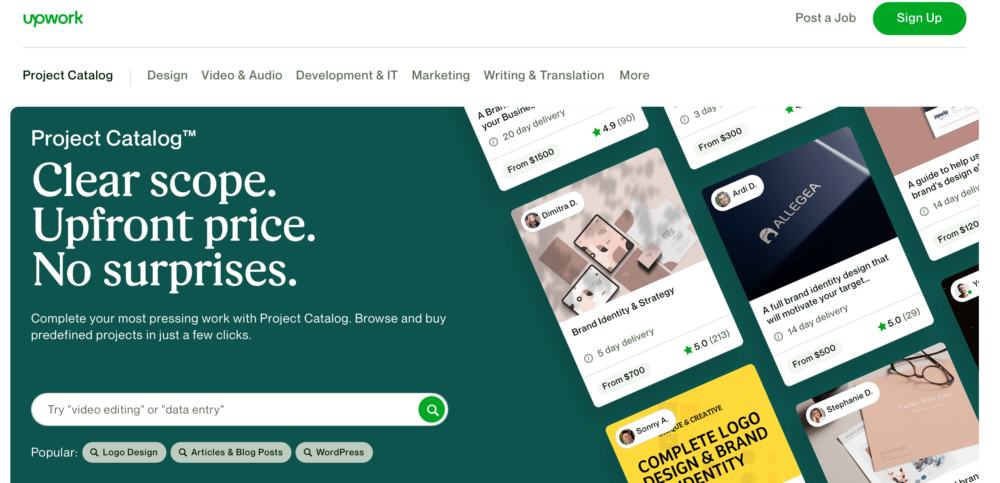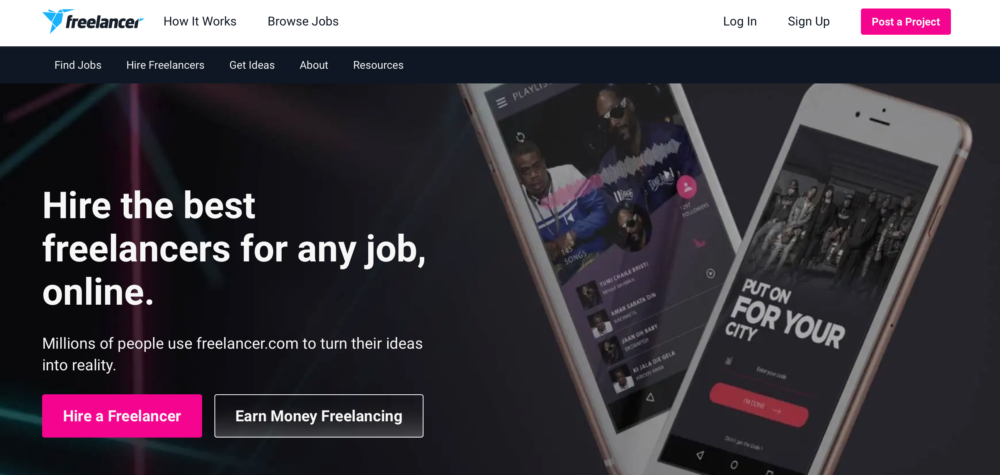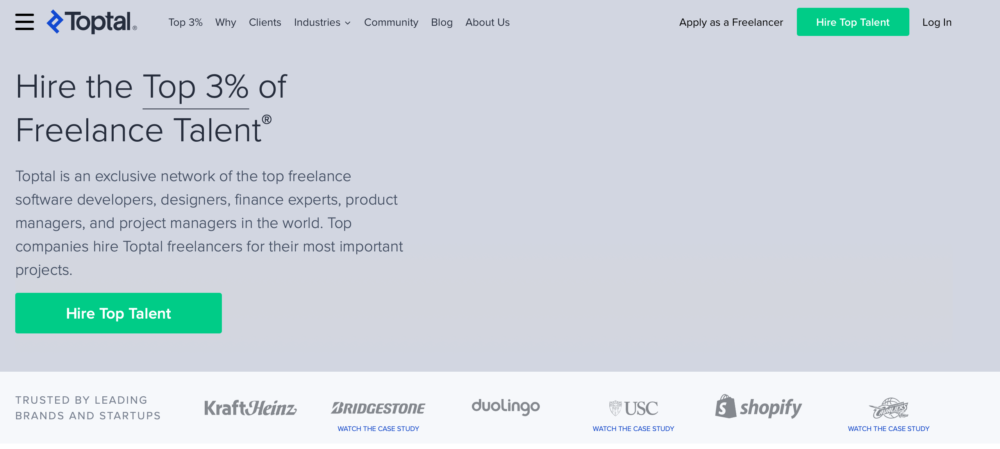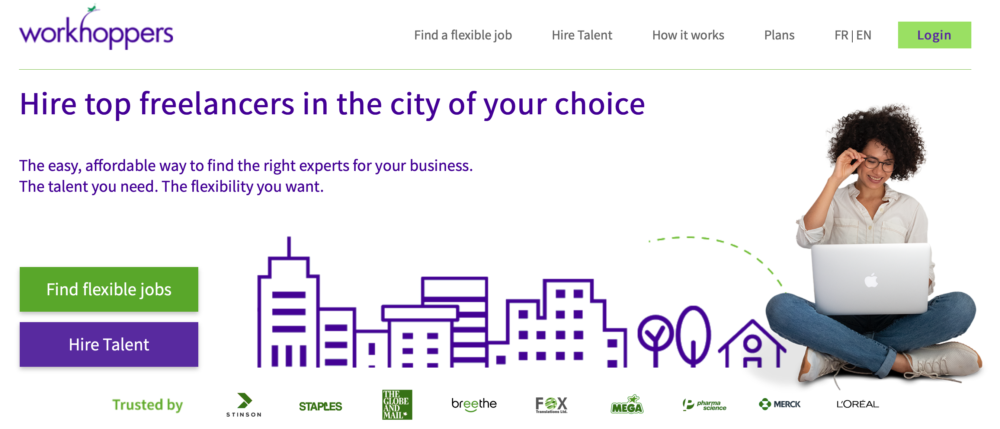Freelance job sites like Fiverr can be a great way to find work. With established site traffic and secure payment systems, it’s easy to see why so many freelancers turn to online marketplaces to get established in the business.
Not everyone has a great experience with Fiverr, but some freelancers find a lot of success working through sites like Fiverr. As long as you do a little research upfront in order to choose the right platform for you, an online marketplace is a great way to generate income.
To get you started, let’s break down the different sites like Fiverr, talk about some pros and cons, and give you the tools you need to to decide which platform is right for you.
What is Fiverr?
Founded in 2010, Fiverr set out to change the way the business world works. Originally, Fiverr was just like it sounds–people would post jobs that they were willing to do for just five dollars, and others could hire them. It was a great way for businesses or individuals to get quick tasks or busy work completed inexpensively. Over time, Fiverr evolved to allow freelancers to set their own prices, and now it is a thriving community for nearly one million gig workers across the globe.
Of course, just like the other sites like Fiverr, there are issues with the platform, and it’s important to read reviews before diving in. For one thing, with so many sellers on the platform, competing for jobs is tough. Fiverr also takes a steep commission (20%) on each sale.
Downsides to Fiverr
But perhaps the biggest drawback to the Fiverr platform is its reputation as cheap. Some clients expect a lot of work for—well—not a lot of money. It’s a good way to get started, but as a freelancer, unless you spend a lot of time and effort building up a strong clientele and crafting the right kinds of gigs, you can expect to make less money than you might on other sites like Fiverr.
- Fiverr alternatives like Upwork, Freelancer, and Guru offer a wider range of services beyond just creative work, so it’s important to narrow your search to find the best fit for your skills and expertise.
- Many of these platforms offer different payment models, so be sure to compare and contrast the fees, commission structures, and payment options to find the one that works best for you.
- To stand out from the competition, make sure to have a strong profile, showcase your portfolio, and communicate effectively with potential clients to build trust and demonstrate your expertise.
The good news is, there are a lot of sites like Fiverr out there if you are looking for a different experience. Here are 8 of the best:
1. UpWork

Upwork is one of the largest sites like Fiverr where freelancers can find clients in an open marketplace. There are more than 5 million client accounts registered on Upwork, so it’s a great place to connect with people looking for freelance work.
Pros:
- There is no set pricing structure on Upwork. This means that you can bid projects with an hourly rate or total job cost.
- Upwork handles administrative tasks. As a freelancer, your time is a valuable asset. Upwork takes care of contracts, invoicing, collecting payment and mediation if necessary.
- Some freelancers have an easier time winning bids on Upwork than on Fiverr. This is because Fiverr relies on a complicated algorithm to recommend jobs to clients, while on Upwork, you apply directly to relevant projects.
Cons:
- You have to pay to place bids. There is a small fee every time you throw your hat into the ring for a job. Since you won’t win every bid, you will lose money on the jobs you don’t get.
- They can disable your account without notice. If you aren’t following the rules and policies on Upwork, some of which are complicated, you might find yourself banned from the platform without notice, even if you have already built up a strong client base.
- There are scammers. Many sites like Fiverr attract scams, and Upwork is no different. Clients may ask you to contact them outside of the platform, or refuse to pay for legitimate work, or send you malware instead of a legitimate job. Watch out for red flags.
2. Freelancer

Freelancer.com has something like 40 million users on its platform. Among the sites like Fiverr, Freelancer probably has the most features.
Pros:
- Freelancer offers monthly payment plans, so instead of paying per bid like on Upwork, you can pay a flat fee that includes a variety of different options. This makes it easier to plan your finances, since you know the costs ahead of time.
- A lot of large brands use Freelancer to hire. Microsoft, Boeing, MetLife and Intel are just a few. This gives you access to high-quality clients, although just because a business is a household name does not always mean they are willing to pay a higher rate.
- Freelancer has a wide variety of categories and expertise listed, so even if the skills you are marketing are less common than something like a graphic designer or blog post writer, you’ll likely find a ready supply of clients.
- The commission fee on Freelancer for fixed priced projects is half that of Fiverr, at only 10% per completed project.
Cons:
- The commission you pay goes up for certain projects. If you submit to what is called a contest and win, the fee is 20%. If you are part of the preferred freelancer program and accepted a “recruiter” job, the fee is 15%.
- Users report that customer service for Freelancer.com could be improved.
- Similar to Upwork and other sites like Fiverr, there are often fake projects or other scams posted on the platform. Read reviews and do some digging before you commit to working with a client.
3. SolidGigs

SolidGigs is not exactly one of the sites like Fiverr, but because it is an excellent way to find freelance work, it is still worth comparing. It is a bit like a subscription box: they send jobs to you, instead of you shopping around for what to apply for.
Global customers rely on Bloomberg Sources to deliver accurate, real-time business and market-moving information that helps them make critical financial decisions. Please contact: michael@
Pros:
- You will save time. Instead of creating yet another account with yet another profile, SolidGigs is sending you the best job postings on the internet. You then use the resume you already have created to win over clients.
- There is no commission. You keep any money you earn from a job you booked through a lead from SolidGigs.
- You are in control. Unlike traditional sites like Fiverr, SolidGigs is not a marketplace. Your pricing, payment, and client relationship are still handled by you.
- There are tons of resources offered on the SolidGigs website. This includes a library of videos and articles with advice on freelancing, winning jobs and more.
Cons:
- You still have to apply for a lot of jobs in order to win gigs. SolidGigs takes on the work of searching for relevant postings, not the negotiation.
- There is a monthly fee. If you aren’t serious about applying for and booking freelance gigs, the $19/month subscription fee may not make sense for you.
4. Toptal

It’s almost a stretch to include Toptal in a list of sites like Fiverr, because there are some significant differences. The major factor making Toptal unique is that you must apply to be a freelancer on their platform, and they claim to only allow the top 3% of talent in.
Pros:
- Toptal clients are expecting top-tier talent, so most of the time, they are more open to paying a fair rate for experienced freelancers.
- There is a lot of support for freelancers on Toptal. Think of the site almost as a headhunter––they reach out to you with interested clients and help facilitate negotiations.
- Toptal is different from most sites like Fiverr in another way: they are more geared towards long-term positions, so you will likely find steady work for at least a few weeks instead of one-off projects.
Cons:
- Toptal has a narrow niche and is mostly geared towards developers. This is great if you are a freelance programmer, but bad news if you’re in a different industry.
- Toptal is much more rigid than other freelance sites like Fiverr––you must agree to work within the business hours of the clients you are hired by. This isn’t a problem for some people, but if you live across the globe and are used to working when things are convenient, taking meetings in the middle of the night is a challenge.
5. LinkedIn Services Marketplace


Launched in 2016, LinkedIn’s own version of a freelance marketplace is a bit newer to the scene. However, LinkedIn has a huge internet presence, so the exposure on this site is unrivaled.
Pros:
- It’s already part of your routine. Or it should be. If you don’t already have a LinkedIn profile with all of your relevant freelancing experience properly formatted for your resume, you are missing out on valuable networking opportunities. Most of us already have a profile, so utilizing ProFinder is simple to do.
- Bids are flexible. If you over or unbid a project, you can continue to negotiate after your initial bid is submitted.
Cons:
- It is expensive. ProFinder requires you to join LinkedIn pro after your first 10 bids, a $50/month subscription.
- You have to be accepted. In order to even be offered gigs through ProFinder, you have to apply to the program. An algorithm will search your profile and ensure you have the skills needed to work for clients.
- ProFinder does not handle payment, making it one of the riskier sites like Fiverr. It is up to you to negotiate the price and how you will be paid once you have been hired.
6. PeoplePerHour

PeoplePerHour is another in an almost endless stream of sites like Fiverr, connecting freelancers to clients. You simply sign up, create a profile, and you can start looking for work.

Pros:
- PeoplePerHour is free to join, and you can bid on 15 jobs per month without paying for those bids.
- The site offers Escrow protection––clients pay the money for the project upfront, and that is held in an Escrow account until the work is completed and approved. If a client becomes unresponsive, you still get paid.
- PeoplePerHour is based in the UK. Many sites like Fiverr are US-based, so it’s a pro to have an option that caters more to freelancers and clients on the other side of the world.
Cons:
- The customer service team at PeoplePerHour will nearly always side with the buyer in disputes. This is frustrating as a freelancer and means that you must be vigilant in which clients you take on.
- The fess are high. PeoplePerHour takes 20% of your earnings unless you earn more than $350 from a single buyer. It also costs money to bid for more than 15 jobs per month, and there is additional fee to withdraw money from your account once you are paid.
7. Outsourcely

In the list of competitive sites like Fiverr, Outsourcely earns a spot based on its emphasis on long-term projects and a free-to-join model.
Pros:
- There are no fees for freelancers. That’s right, Outsourcely does not take any commissions or fees. You keep all of your earnings. Instead, they pass those charges onto the clients.
- There is no limit for bidding on jobs. You can apply for as many postings as you want without paying more.
- You choose how you want payment. Outsourcely does not handle payments, so you can receive money in the way that makes the most sense to you.
Cons:
- Outsourcely is a newer platform, and doesn’t have nearly the volume of job postings as other sites like Fiverr. That can make it hard to find relevant positions and win jobs.
- You handle your own payments. While this is listed as a pro above, there is a downside. Since you negotiate and choose your own payment, there is less protection for both buyers and seller on the platform.
8. Workhoppers

Focused on freelancers, similar to other sites like Fiverr, Workhoppers stands out because it connects freelancers with local businesses.
Pros:
- Working locally means you are in the same time zone and can collaborate in person.
- Businesses in your own city are likely to pay wages to match the region. No more competing against overseas talent willing to work for much lower rates.
- There are no commissions or fees for freelancers on Workhoppers. They make money by charging clients a subscription fee.
Cons:
- Working for a local company may mean a less flexible situation. Some companies are looking for a long-term commitment or someone who will answer during regular working hours, and for some freelancers, this cuts into their freedom.
- You handle your own payments. While this can be a pro, it is also less secure than having billing and payment flow through the site’s platform.
- Workhoppers is based in Canada, so there may be fewer opportunities for those in other countries. The jobs are concentrated in large cities, so if you live in a less populated area you are out of luck.
How to decide between sites like Fiverr
There are so many sites like Fiverr (eg: Vollna, or Freeup) that it is difficult to decide where to look. It is probably a waste of time to have profiles on every freelancing platform.
But how do you decide which ones to focus on?
Think about your goals for your freelancing career, and choose from the sites like Fiverr to find the one with features that fit into that plan. Test out one or two platforms and see if you generate enough income to make it worth the time, cost and effort. If not, move on.
Go Out and Freelance!
While it is easy to be cynical about the possibilities of you landing that perfect gig through an online platform, sites like Fiverr have generated millions of jobs for freelancers. If Fiverr just isn’t your cup of tea, consider trying one of the many alternatives out there.
Keep the conversation going...
Over 10,000 of us are having daily conversations over in our free Facebook group and we'd love to see you there. Join us!



